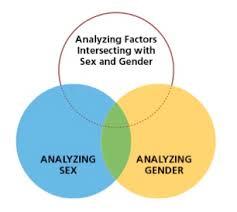
The Women's Health Research Institute has teamed up with North American leaders to advocate for sex inclusion in basic research. Teresa K Woodruff, PhD, director of WHRI, and Melina R Kibbe, MD, WHRI Leadership Council member and vascular surgeon have joined nine other academic leaders in sex based medicine on an opinion piece entitled Sex inclusion in basic research drives discovery. Published in the April 2015 edition of PNAS the article reinforces why sex inclusion is one of "most underappeciated differences in biomedical research". It addresses the objections that have been made against inclusion of females in preclinical research by naysayers who are resisting a more equitable policy.
While most of the discussion on this topic has revolved around biological sex differences, this article begins the discussion of the complex interdependency of sex and gender in animal research.
This article emerged from a workshop held at Stanford University in September 2014. Besides Northwestern Feinberg School of Medicine, the other authors represent John Hopkins, Stanford U, U of California Irvine, U of Toronto, Georgia State, U of Maryland, McGill U, U of California Berkeley.

 As we learn more about sex differences, it is easy to understand why both men and women need to be included in clinical research. But why does the sex of a cell used in basic research matter? Cell lines and primary cells are often used by basic scientists in proof-of-concept experiments and when trying to figure out how biological mechanisms work. These early findings help provide valuable clues for developing new drugs, treatments and diagnostic models that eventually can be applied to humans.
As we learn more about sex differences, it is easy to understand why both men and women need to be included in clinical research. But why does the sex of a cell used in basic research matter? Cell lines and primary cells are often used by basic scientists in proof-of-concept experiments and when trying to figure out how biological mechanisms work. These early findings help provide valuable clues for developing new drugs, treatments and diagnostic models that eventually can be applied to humans.  In response to the call for more sex inclusion data in drug studies, the FDA has developed
In response to the call for more sex inclusion data in drug studies, the FDA has developed  The recent announcement by the NIH that it would change its funding decisions to address the lack of female animals and cells in early bench research, was indeed good news. Yet, to date, no funding rules have changed. To be fair, the NIH did issue a request for information from the research community so they could better understand the barriers to inclusion. They are now reviewing those comments.
The recent announcement by the NIH that it would change its funding decisions to address the lack of female animals and cells in early bench research, was indeed good news. Yet, to date, no funding rules have changed. To be fair, the NIH did issue a request for information from the research community so they could better understand the barriers to inclusion. They are now reviewing those comments. The Women’s Health Research Institute at Northwestern University applauds the recent release of a new Action Plan developed the Food in Drug Administration in response to a Congressional directive to look closer at the inclusion and analysis of demographic subgroups including women and minorities in applications for new drugs and devices.
The Women’s Health Research Institute at Northwestern University applauds the recent release of a new Action Plan developed the Food in Drug Administration in response to a Congressional directive to look closer at the inclusion and analysis of demographic subgroups including women and minorities in applications for new drugs and devices. Stephen Colbert's show featured clips from the Women's Health Research Institute's recent 60 Minutes segment on sex inclusion in research. More than ever, it is essential to include male and female animals at the research level to ensure that sex is examined as a variable that can lead to different treatments and medications for different genders. The Institute has be advocating for full inclusion in human, animal and cell research!
Stephen Colbert's show featured clips from the Women's Health Research Institute's recent 60 Minutes segment on sex inclusion in research. More than ever, it is essential to include male and female animals at the research level to ensure that sex is examined as a variable that can lead to different treatments and medications for different genders. The Institute has be advocating for full inclusion in human, animal and cell research!